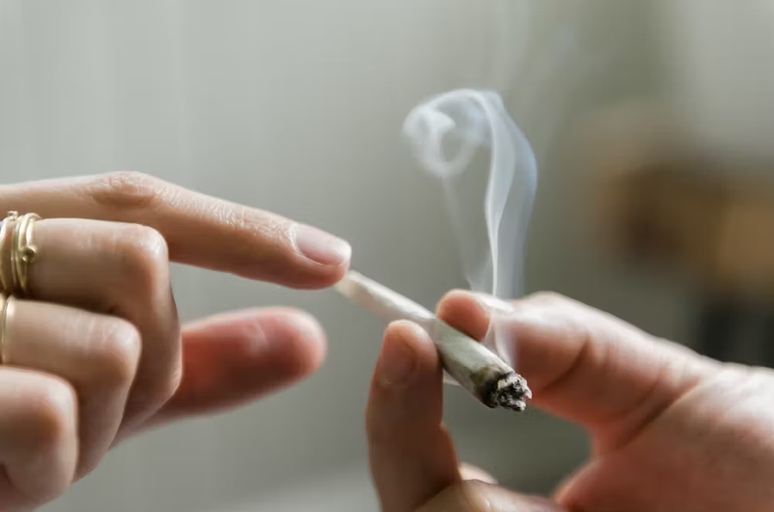Recent research raises concerns about the health effects of cannabis smoke exposure
html[data-range=”xlarge”] figure image img.img-7bc02373a31f87694c6290596cde93dfep8r2pqw { width: 774px; height: 516px; }HTML[data-range=”large”] figure image img.img-7bc02373a31f87694c6290596cde93dfep8r2pqw { width: 548px; height: 365px; }HTML[data-range=”small”] figure image img.img-7bc02373a31f87694c6290596cde93dfep8r2pqw, html[data-range=”medium”] figure image img.img-7bc02373a31f87694c6290596cde93dfep8r2pqw { width: 564px; height: 376px; }HTML[data-range=”small”] .article__image-embed, html[data-range=”medium”] .article__image-embed {width: 564px; margin: auto 0 30px; }
While tobacco use is declining among adults in the United States, cannabis use is on the rise.
The laws and policies governing tobacco and cannabis use are also moving in different directions.
Tobacco policies are becoming more restrictive, with smoking bans in public places and sales restrictions, such as state bans on flavored products.
Conversely, more and more states are legalizing cannabis for medical or recreational use, and there are efforts to allow cannabis exceptions in smoking laws.
These changes mean that an increasing number of people are at risk of being exposed to cannabis smoke. But how safe is direct and secondhand cannabis smoke?
I am a primary care physician and researcher in a state where cannabis is now legal for both medical and recreational use.
My colleagues and I were interested in how views on the safety of smoking tobacco and cannabis have changed during this period of growing cannabis use and commercialization.
In our survey of over 5,000 US adults in 2017, 2020 and 2021, we found that people increasingly believe that exposure to cannabis smoke is safer than tobacco.
In 2017, 26% of people thought it was safer to smoke a joint of cannabis than a cigarette every day. In 2021, over 44% chose cannabis as a safer option.
People were also more likely to view secondhand cannabis smoke as “completely safe” than tobacco, even for vulnerable groups such as children and pregnant women.
Despite these views, recent research raises concerns about the health effects of exposure to cannabis smoke.
Opinions and science
Decades of research and hundreds of studies have linked tobacco smoke to multiple types of cancer and cardiovascular disease.
However, there are far fewer studies on the long-term effects of smoking cannabis. Because cannabis is still federally illegal, it’s harder for scientists to study it.
It has been especially difficult to study health outcomes which can take a long time and more exposure to develop.
Recent reviews of cannabis and cancer or cardiovascular disease research found that these studies were inadequate because they included relatively few people with heavy exposure, did not follow people long enough, or did not adequately account for smoking.
Many advocates point to the lack of clear findings on the adverse effects of exposure to cannabis smoke as evidence of its harmlessness.
However, my colleagues and I believe this is an example of the famous scientific quote that “absence of evidence is not evidence of absence.”
Scientists have identified hundreds of chemicals in both cannabis and tobacco smoke, many of which are carcinogenic and toxic.
The burning of tobacco and cannabis, whether through smoke or herbal vaporizers, also releases particles that can be inhaled deep into the lungs and cause tissue damage.
Animal studies of the effects of secondhand tobacco and cannabis smoke show similar worrying effects on the cardiovascular system, including reduced blood vessel dilation, increased blood pressure, and decreased heart function.
While more research is needed to determine the risk of lung cancer, heart attacks and strokes from smoking cannabis, what is known has raised concerns among public health agencies.

Why are opinions about cannabis important?
How people perceive the safety of cannabis has important implications for its use and public policy.
Research shows that when people believe something is less risky, they tend to use it more.
Opinions about the safety of cannabis will also influence medical and recreational cannabis laws and other policies, such as whether smoking cannabis will be treated like tobacco smoke or whether exceptions will be made to no-smoking laws.
Part of the complexity in decisions about cannabis use lies in the fact that, unlike tobacco, clinical studies have shown that cannabis can have benefits in certain contexts.
This includes managing specific types of chronic pain, reducing nausea and vomiting associated with chemotherapy, and increasing appetite and weight gain in people with HIV/AIDS.
It is worth noting that many of these studies were not based on smoked or vaped cannabis.
Unfortunately, even though an internet search on cannabis returns thousands of results on the health benefits of cannabis, many of these claims are not supported by scientific research.
I encourage people who want to learn more about the potential benefits and harms of cannabis to talk to healthcare professionals or seek out sources that present an unbiased view of the scientific evidence.
OR National Center for Complementary and Integrative Health provides a good overview of studies on cannabis for the treatment of various medical conditions, as well as information on potential risks.
*Beth Cohen is a professor of medicine at the University of California, San Francisco
Source: Terra
Ben Stock is a lifestyle journalist and author at Gossipify. He writes about topics such as health, wellness, travel, food and home decor. He provides practical advice and inspiration to improve well-being, keeps readers up to date with latest lifestyle news and trends, known for his engaging writing style, in-depth analysis and unique perspectives.








